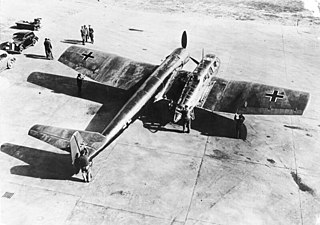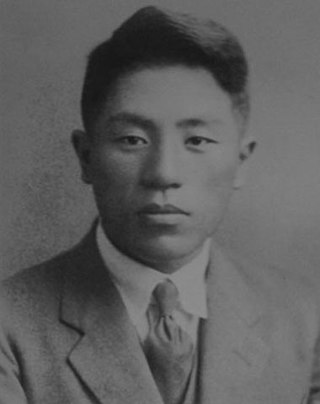Career
On being discharged from military service in August 1916 Vogt found work at the Zeppelin works in Friedrichshafen. While there, he was impressed by Claudius Dornier and determined to become an aircraft designer. After the war, he completed a two-year course at the Technical University in Stuttgart, and subsequently served as an assistant to Professor Baumann at the university's Institute of Aeronautical and Automobile Systems until 1922. During that period he was awarded his first patent and received a doctorate degree.
Kawasaki
On behalf of Dornier, Vogt was briefly sent to Italy, then in 1923, to Kawasaki in Kobe, Japan, which was a licensed manufacturer of Dornier aircraft. In Japan he was appointed as chief designer, and he trained the young Japanese engineer Takeo Doi to be his successor. Doi later designed the Ki-61 Hien. During that period Vogt designed several types including the KDA-5 Army Type 92 biplane fighter plane, KDA-2 Army Type 88 biplane reconnaissance, KDA-3 single-seat fighter, and (in cooperation with Doi) a modified version of the KDA-5 Army Type 92-I biplane fighter. He stayed with Kawasaki until 1933.
Blohm & Voss


In 1933 he was offered the position of Chief Designer at Hamburger Flugzeugbau, an aircraft manufacturer recently established by Blohm & Voss shipbuilders. During his flight back from Japan he worked on the idea of a tubular steel main wing spar which could also double as an armoured fuel tank. Almost all of his subsequent designs would feature such a combined hollow steel spar and fuel tank.
Vogt's next major innovation was an asymmetric aircraft layout in which the thrust line was offset to one side, allowing the pilot a clear view on the other side. It appeared in the Ha 141 reconnaissance aircraft. Approximately 20 were built.
Shortly before World War II broke out, Hamburger Flugzeugbau was reformed as the aircraft division of Blohm & Voss and changed its name accordingly. The designation of Vogt's aircraft changed from Ha to BV, with many of the types then under development changing their designations, for example the Ha 141 became the BV 141.
Other important, more conventional designs included a series of ever-larger flying boats. The BV 238 was the largest and heaviest aircraft manufactured until the end of the war by any Axis power. Vogt also developed a series of gliding munitions, but the advanced control systems caused problems and although quite large quantities were manufactured, none saw operational service.
His design style was noted by the British journal Aeroplane in the caption to a cartoon: [1]
Richard Vogt, that original man,
Turns out aeroplanes uglier than
Most any other designer can.
Here is shown on Baltic Sea
A typical Vogt monstrosity—The One-Three-Eight by B. & V.
Vogt's final innovation was a tailless "pfeilflieger" (swept wing) design, well suited to the new jet engines then under development. A series of designs culminated in the P 215 all-weather fighter, which received an order for three prototypes just weeks before the war ended. [2] [3]
American "Paperclip"
This section needs additional citations for verification .(February 2018) |
After World War II, Vogt was recruited by the US Air Force under "Operation Paperclip", and he moved to the United States. He worked as a civilian employee for the Research Laboratory of the US Air Force in Dayton, Ohio from the beginning of 1947 to 1954. Later he became the chief designer of the Aerophysics Development Corporation and worked there until the parent company closed the business in 1960.
From August 1960 to August 1966, he served as a staff member on the team of George S. Schairer, who was the chief aerodynamicist in the research and testing division of Boeing. At Boeing, Vogt was involved in the design of vertical takeoff systems and hydrofoils. He also investigated the effect of the length and shape of wings on the flying range, and he proved that small extensions attached to both tips of the wings improved the aerodynamics and increased the operational range of the aircraft. This finding has been widely used in modern aircraft, where the extensions are known as wing tips or winglets. His last assignment was the after-launch evaluation of the design of the Boeing 747.








